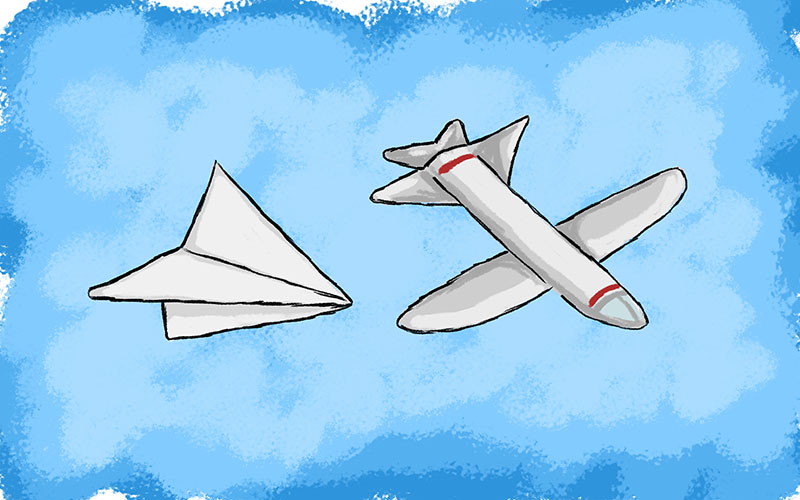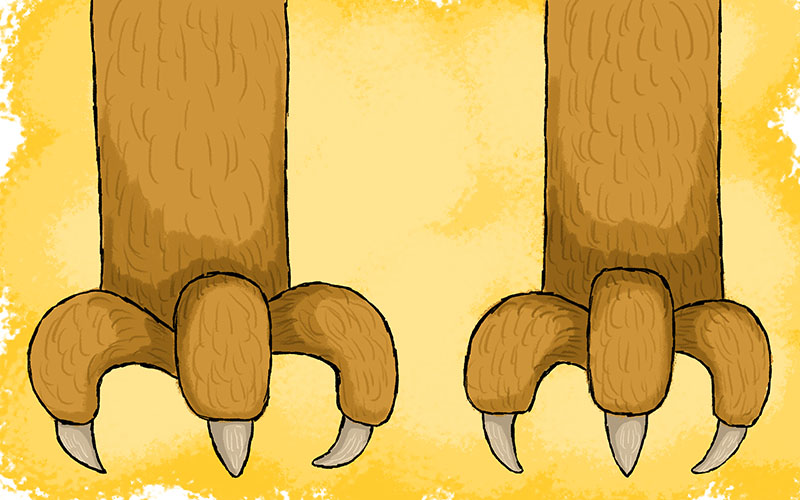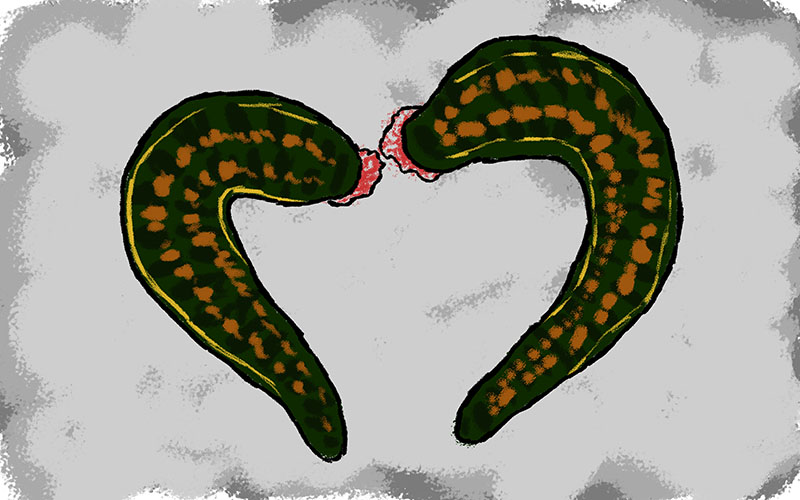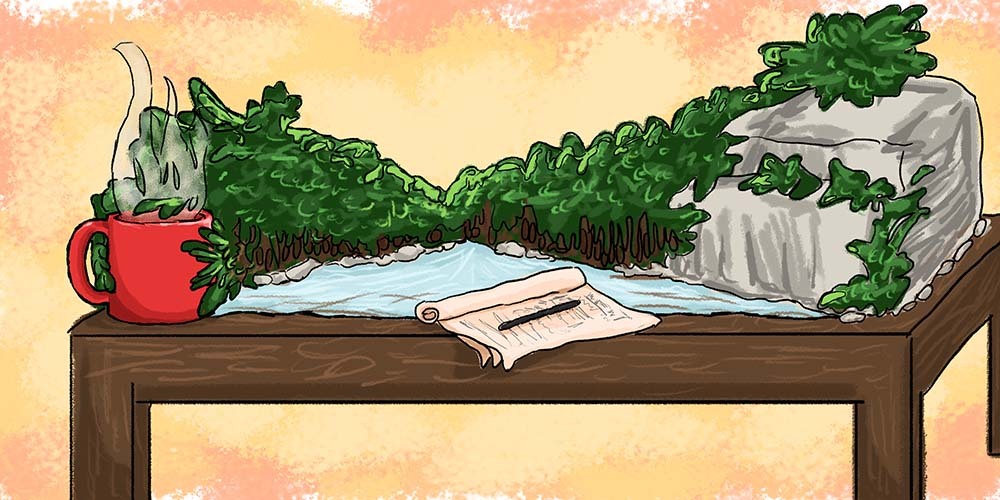Many have no use for the small corners and underseen pockets of this country. You look on a map, say the indubitable Rand McNally Atlas, of what is Western New York and what do you see? A narrow run-off of flatlands from the crux of the state’s main mass; a left-field afterbirth, excepting Niagara Falls, quite distinct from the bold stylings of its more concentrated areas — the Finger Lakes, the Mohawk, and Hudson Valleys, the Southern Tier, the North Country with the dome of Oreoing Adirondacks, and of course, its side pocket metropolis and extending terminal moraine. Zeroing in closer, two Great Lakes sandwich the Northwestern small mushroom of Erie County, including ignominious Buffalo. Here the land narrows into a twenty-mile isthmus that becomes Ontario just across the charging Niagara River, whose falls have moved almost seven miles in 12,000 years, helping to create the deepening gorge below.
For a little over two years, I lived in Buffalo, renowned for its rotten winter weather (actually Rochester gets more snow) and its shadow of what it once was: an industrial power and a turn of the century winter getaway for the jet-set, with its “City of Lights” moniker care of all the hydroelectric power from the falls. In the 1950s, the St. Lawrence Seaway opened, cutting off the city from trade routes and with further deindustrialization, its population plunged by over 55%. By my arrival in 2007, it was thoroughly depressed, the downtown hosting many a ghost town moment. What should have been the lifeblood of the city, the main campus of SUNY-Buffalo, had been farmed out into the suburbs during the 1970s to make it more “riot-proof.” The weather was bad, one year it reached a high of 45 on Memorial Day. But I’d come to Buffalo for love, that is to be loved and have sex. Tens seasons there made up the continual flowering, pinnacle, and breakdown of a relationship.
Attached to a surgery intern, I had to fill the long lonely hours in a place where I knew few (one) and come up with new or continue old activities. Since I arrived in summer, tennis became the chosen relaxer for its difficulty, exercise, and restorative nostalgia for playing with my father in youth.
We lived near Delaware Park, a marvel of design by the honorable Frederick Law Olmstead, though in the 1960s it had been bifurcated by the Scajaquada highway, the local road most everyone in the US takes to the Falls. In the area, Delaware Park is close to half of Central Park. The smaller westerly patch contains the Albright Knox Art Gallery near the trembling waters of a lagoon mistakenly titled “lake.” One of the nation’s most august small museums and probably Buffalo’s best “sight,” the collection was greatly enhanced by Seymour Knox’s additions, as he was one of the first collectors to champion abstraction. The park’s larger portion has a one and three-quarter mile oval running track with an 18-hole golf course close-set in its middle. Tennis and basketball courts, soccer fields, playgrounds, and a zoo abut them.
I had first played with my girlfriend during the rare openings in her schedule at the four courts near the ninth hole’s tees, but I’d noticed a few people seemed to just go and wait about to find a rallying partner. It was here I asked into the company of a Croatian, Mele, who would become my closest friend.
I never nailed down the rudiments of the game but tried to supersede my dim talents nonetheless, like thinking one’s paper airplane will compete with a remote-controlled one. Mele put up with me, barely. Eventually, he rebuked my silly drop spin shots as effete, finding them flummoxing, and threatening to call off our games if I chose to utilize one again. I had no forehand, but the back, while wildly erratic, sometimes came up with winners. Eventually, we dropped away from the courts.

Nearly the same age, he carried a fulsome squarish face with a lacquering of melancholy (he’d not yet processed a break-up some months ago), but a brawny Balkan coloring refracted the generosity inside, an outgrowth of old-world manners brought west. He made his way as a handyman and he uncomplainingly loaded his tools in his car every morning to make the money that would allow him to visit home for a good six weeks a year. Fiscally adept, he’d just purchased a large multi-family house and planned to rent out the downstairs to practically pay the mortgage and utilities. An invisible glue conjoined us (he was the half of the population who went to people when they have lost love), and he brought my lover and me into his more established circle (a motley bunch of Buffalonians and other ex-pats), tipped us off on an apartment he had just vacated above a dentist’s office in a grand landmarked building (referencing us and helping us move when accepted), and found me low-grade, low-pay construction work. We tried to give back to this extremely generous man. When he mangled his hand on the job (like many a woodworker, he had no health insurance) my girlfriend, luckily on an off-day, stitched him in about an hour. There were dinners, parties, two Thanksgivings — eventually, he rented to an English lodger, a mumbling man who had eyes for my girlfriend, bedding her during our break up over a year later. This last bit of nastiness was something Mele felt responsible for. But I am more interested in the mid-point of our stride. If the end is in the beginning, the middle has the prettiest, most undiluted nectar. It is what remains, vivid and inexorable. Everything else, what pained me so — I never saw him again after I left Buffalo — is a dream to me now.
I fear I am grasping at formlessness as I attempt to center on one arcane afternoon in the midst of a relatively brief friendship. Yet it’s the essence of all the good that built up before and sorrowing that followed after — it’s the essence because I remember it the most, though something more bloodless follows. The grand denouement is not the memory itself, and hence, not the past. It is the act of remembering. It is being alive now, happier and wiser than at any other time (and a father), and looking back from this magical mountain of the present, my newfound kryptonite against regret. If memory is too green at 23, too spidery at 33, when 43 comes knocking, one is ready to cast back and say, I’ve spent dozens of seasons doing this now — well enough time to see what I have made of myself.
Zoar Valley Multiple Use Area is a declivity of gorges in Western New York, eight miles along the Chatterugus Creek’s main branch and three miles on the south branch. I’m not sure how Mele found it. What Erie County lacks in mountainous terrain is well made up by the lush gorge dividing countries and holding giant whirlpools just upstream from Niagara Falls (itself too touristy) and this curious spot, about 35 miles south of Buffalo. Unique for its old-growth forests east of the Mississippi, it has a half barren/half-wild topography; the barren parts are those soaring vegetation-less walls akin to the “outer limits” at the beginning of Planet of the Apes — a desolate wasteland where the astronauts initially crash, scenes filmed in Utah’s Glen Canyon. Zoar’s gorges have canyon walls of nearly 400 feet with makeshift paths through the scree-filled sides. Because of this, it is known for its deaths and rescues, as just last August a family of four (it’s still unconfirmed if one or two children were with the parents at the time) fell into the gorge, killing the young parents, though the two young sons, seven and four, survived. The area has long been thought haunted, with uncorroborated and fantastic stories of the paranormal, including the ludicrous legend of the clawfoot people, residents born in the area over one hundred years ago, all from the polluted blood of a syphilitic British former prostitute. In 1971, authorities prohibited people from staying overnight due to the number of drug-induced and other incidents, probably saving a few hundred lives over the years.

Mele and I went in the middle of a summer weekday, the sky cloudless, the air hot but not humid. Like the few times I visited afterward it was mostly deserted. I think we came upon two sets of people all day. We decamped off the only maintained creek trail and into the shallow run of the south branch, at a July low then, its dried bed’s banks full of the flakey tile-thin siltstone and shale, that of the gorge itself.
What were we that day, what were we like? There is a scant transcript of our words in my account because reality and the memory of the reality provoke none. A person pressed into living in the United States, who is not a native speaker, often spits streams because that is his or her survival, as well as what we Americans prick out of foreigners because we are so officiously impressed with an alien, an etranger, we plug away with pathologically prying questions. So often I have met foreigners here who snarl their views in antipathy of the standard story they have grown to disdain but obligingly answer. Mele and I had passed through this phase after a few weeks. In terms of myself, a few years before, at an eclipsingly honest self-help week in Oregon, people were asked to describe me in one word during a “getting real” game. “Opaque” and “obscure” were among the lukewarm responses, to which some jokingly added “obtuse” and “orotund.” We weren’t at Zoar Valley to exchange information but to hike, watch the stream, and not be in Buffalo.
We dipped into the forest for shade, walking under the dappled light of Eastern Hemlocks, yellow birches, and red oaks. I felt an insensate presence at odds with our good nature shadowing us, but our moods remained nonvolatile. Out of the cultural bubble, our souls breathe more fully, incorporating a better shield to dangers, or so I think. Our egos weren’t entangled in a jackass show-off gambit, typical of masculinity, as in who can throw the stone the farthest. We’d come this far for what we’d not expect and without comment jointly gazed in the direction of a solitary bird’s sweet song.
Some ways down the thinning creekbed, we were lead back to the main channel of deeper, three to four feet of calico, chalky rushing water and, near to us, some rapids created by a few boulders wedged into the bedrock. One stuck high out. Its stone, worn to smooth, had also been riven to make an askew coffin-sized deformity so the flowing water had to ascend before falling through the shorn slab. Mele easily maneuvered himself through the current and crammed into the opening, and because the rock bottlenecked at the bottom, as well as being inward leaning, one couldn’t slide sideways from the watery crypt. After his turn, I entered, feeling the surge and unceasing water batter me a few power levels up from the highest jacuzzi setting. We were refreshed, laughing the laughs of awe at what the earth can broker.
When I came out, we balanced in the rushing stream and let the high sundry the beads of cold water along our horripilate skin. Then I noted a dank oblong patch on Mele’s calf. He turned to investigate and in doing so more patches appeared — they were all over his back—leeches, smaller ones, matchbook size. They were on me as well, the back and the back of the legs. As we picked and brushed then off, small bands of blood ran in globules and streaks. Invigorated still more, we walked on, dismissing the catching of any blood-borne disease with youth’s invincibility. Now I had an appropriately exciting anecdote to tell my girlfriend that evening, something to compare to her hospital horror stories.
Why should such a reanimating kernel within two mainly failed years in Buffalo explode now? Is it a forgotten buried treasure on an uncharted island? I can’t change that time, nor would I want to. Perhaps it is the man, Mele — I still am absorbing the charity he bestowed — even if he is dead; even if I am living under quite a different sign. We must feel reverberations of what people have done to us much more strongly that what we do to them. If badly-treated we often justify our actions, whether bellicose or timid, as the right ones, and if we achieve good for someone else, we shrug it off as something anyone would have done, unless we stain that virtue black because we feel we were never celebrated enough for gift-giving it, proving the playing of the victim to be our most perspicuous role.
Scientifically unprovable, I would argue to be better off because of this fleeting experience. Not the fact of the little slinking creatures draining my blood, but the sharing of the encounter with another, even if the leeches had only attached to one of us. If sucked when solo, then it would be tending to counterfeit — I’ve been too much alone in life to find what I solitarily and silently experience as novel, even bemusing. Backsliding 30 feet down a massive granite boulder’s sheer slope in Yosemite to get back down an untraversable patch or hitchhiking to Colmar, France from Freiberg, Germany and seeing Grunewald’s Issenheim Altarpiece, both marveling solitary experiences, don’t have the same sautee because they lacked an intimate witness.

Jean Renoir said the only things that are important in life are the things you remember. I don’t know if I’d ever believed this to be a core truth or a brittle sentiment. Harold Bloom averred thinking depends almost entirely on memory. Though maybe, as an Oscar Wilde character says, “Memory usually chronicles the things that have never happened, and couldn’t possibly have happened.” Our past curates our life. We each read into what happens with a fitfulness, dredging up the most barely workable generalization to compete with the persistent flow and floes of time.
Memories feed and fuel the mind’s fire and as people age many remember episodes and afternoons of childhood, pieces they’d not given space in years, maybe never. The main character in Abbas Kiarostami’s Taste of Cherry, who plans to kill himself later in the day, looks for a stranger on the street in hopes of engaging him to bury his body that evening. Early on he picks up a young reticent army recruit and eventually tells him how his own time in the army, compulsory for all Iranians, was “the best time of my life. I met my closest friends.” I will die with this short interlude from Zoar Valley in my quiver. Wallace Stevens says in the poem “The Plain Sense of Things” that at the end of autumn, a.k.a. the end of one’s life, with the barren trees of coming winter in sight, “we return to a plain sense of things.” For me, “return” is the diamond jubilee word. Others, from the Brahmins to the bastard Nietzsche, have named it eternal recurrence — all the learned segments of our time repeating in off-hours. Happily, there is no explanation for why this particular memory assaulted me nearly ten years later. My one-year-old daughter? Brooklyn’s late autumn chill? A restorative counter to my Buffaloian jeremiad? My personal caretaker would probably contend it sprouted from a current lack of similarly humoring male friendships.
“She’s an artist/she don’t look back” goes the Dylan song, mistaking tough love for trite sentiment, and mistaking many artists. Writing sentences inures me to the pain of the past. I believe that without a flickering conscience because I must be one of those people who would never feel happier in a past iteration of my existence. Youth is wasted on the young, Shaw said. In past weeks that’s been roaming around my harbor like a shark fin. Raising a child, I’m seeing more of life. Coast to coast, flatlands to alps. The wheels of reckoning move faster, a new order pushes into the lungs and girds me to cast off and around with no fear of annihilation. Put away childish things and give your life to your issue or someone else. Not a panic-proof formula, but something better than the troubling austerities in the radioactive social media cesspool. •




